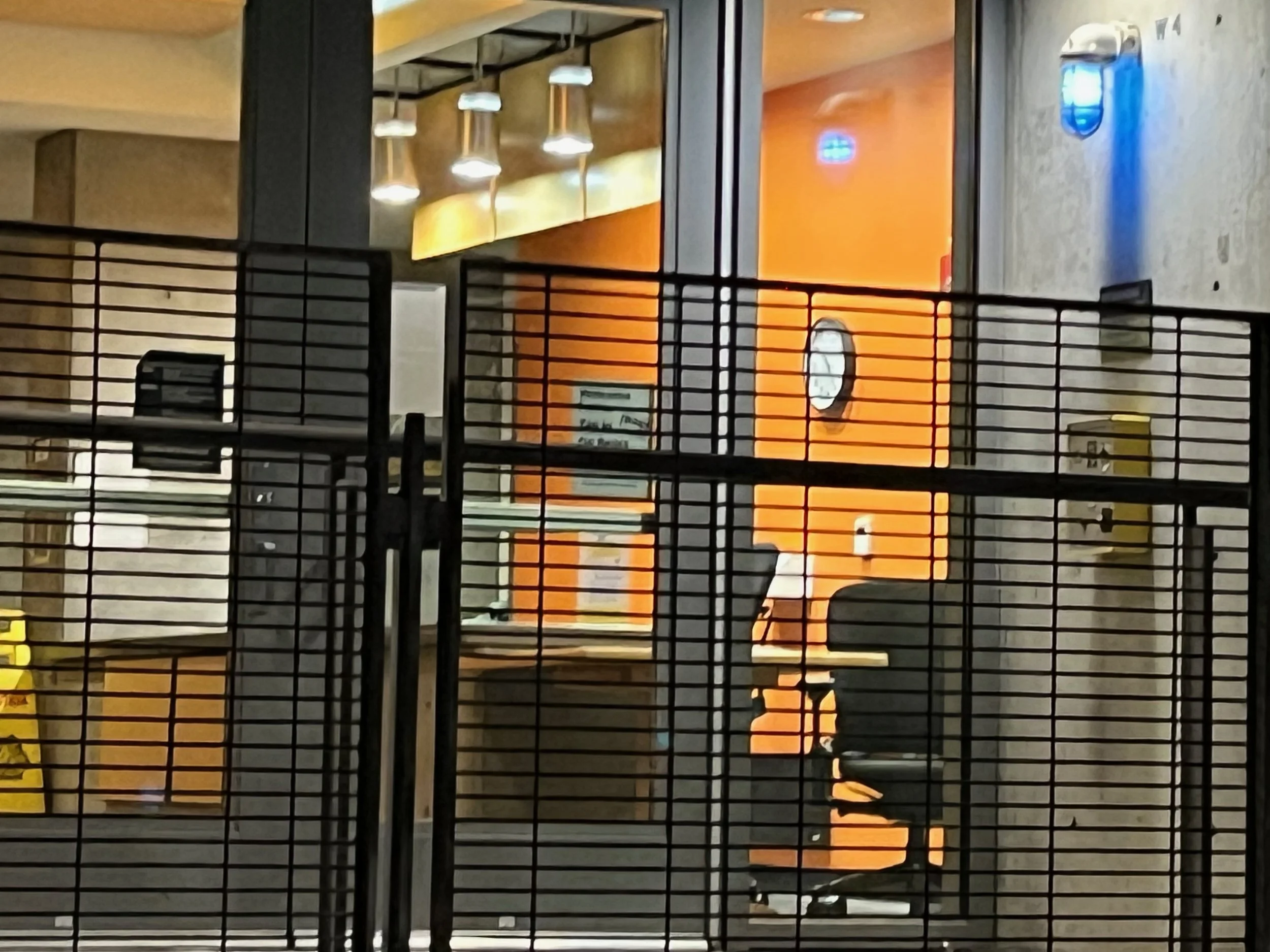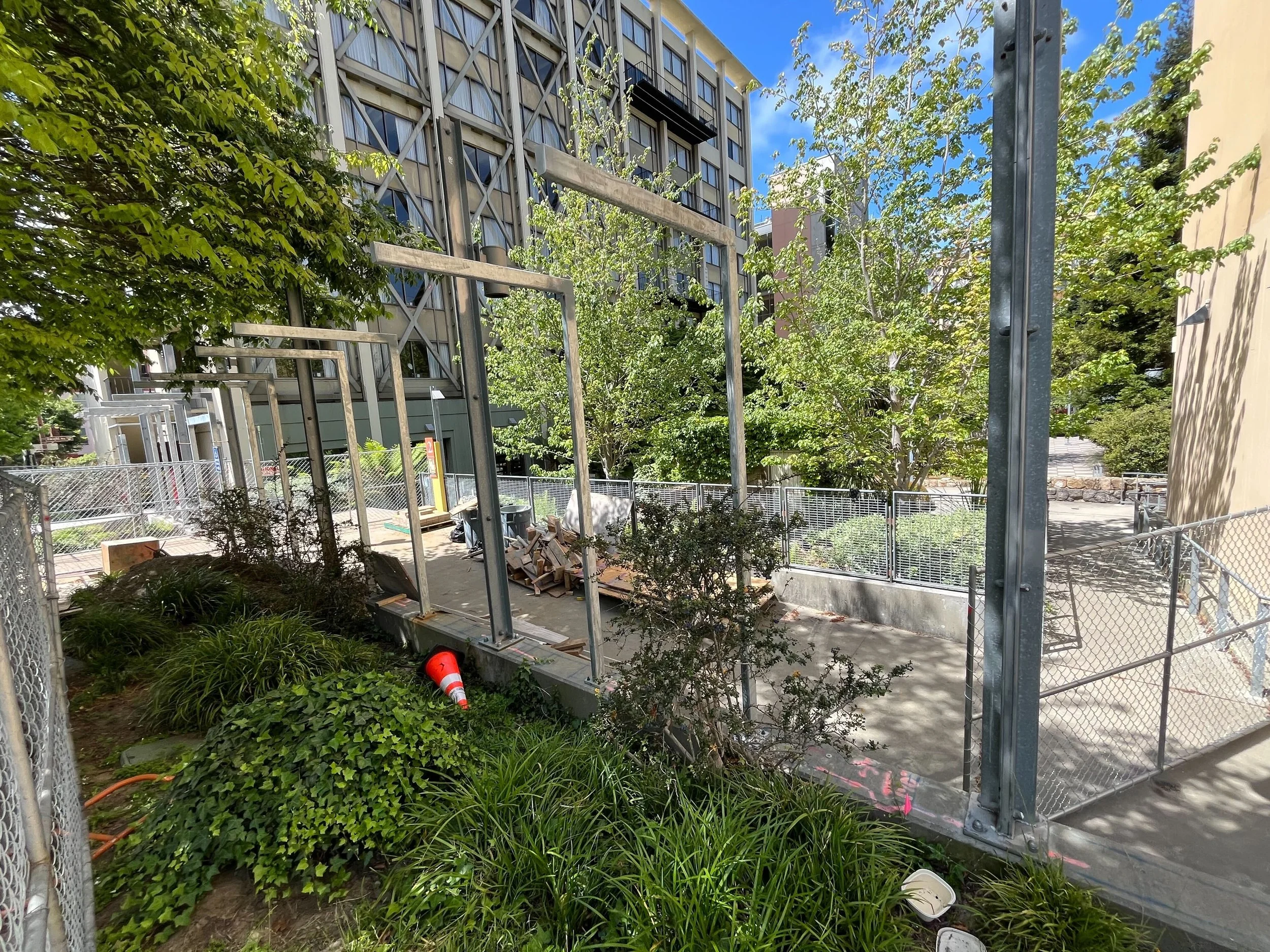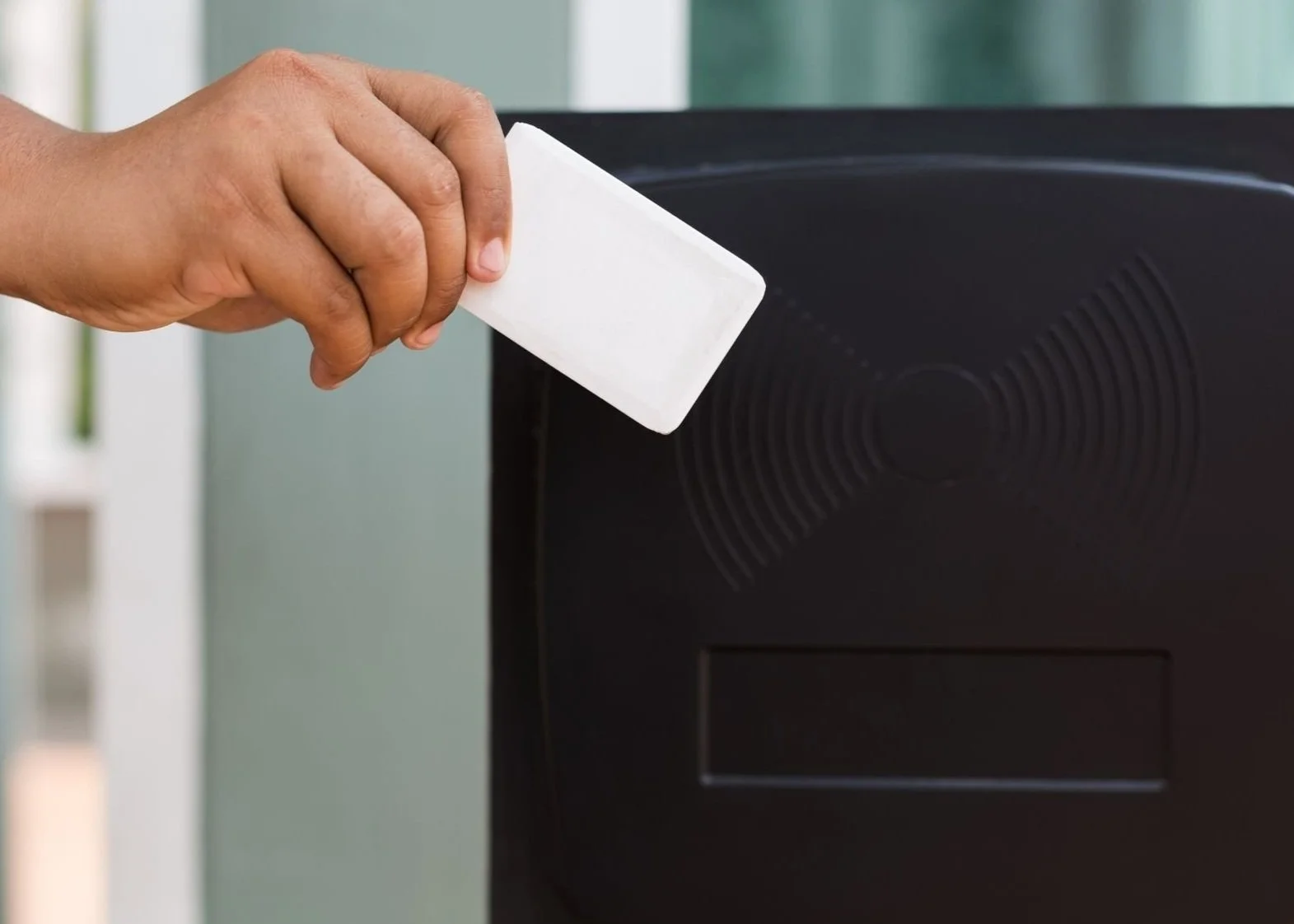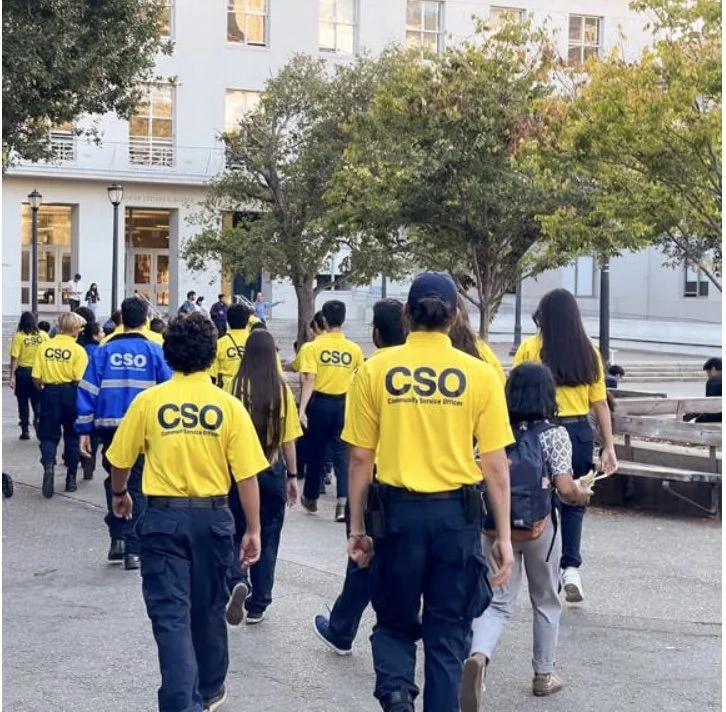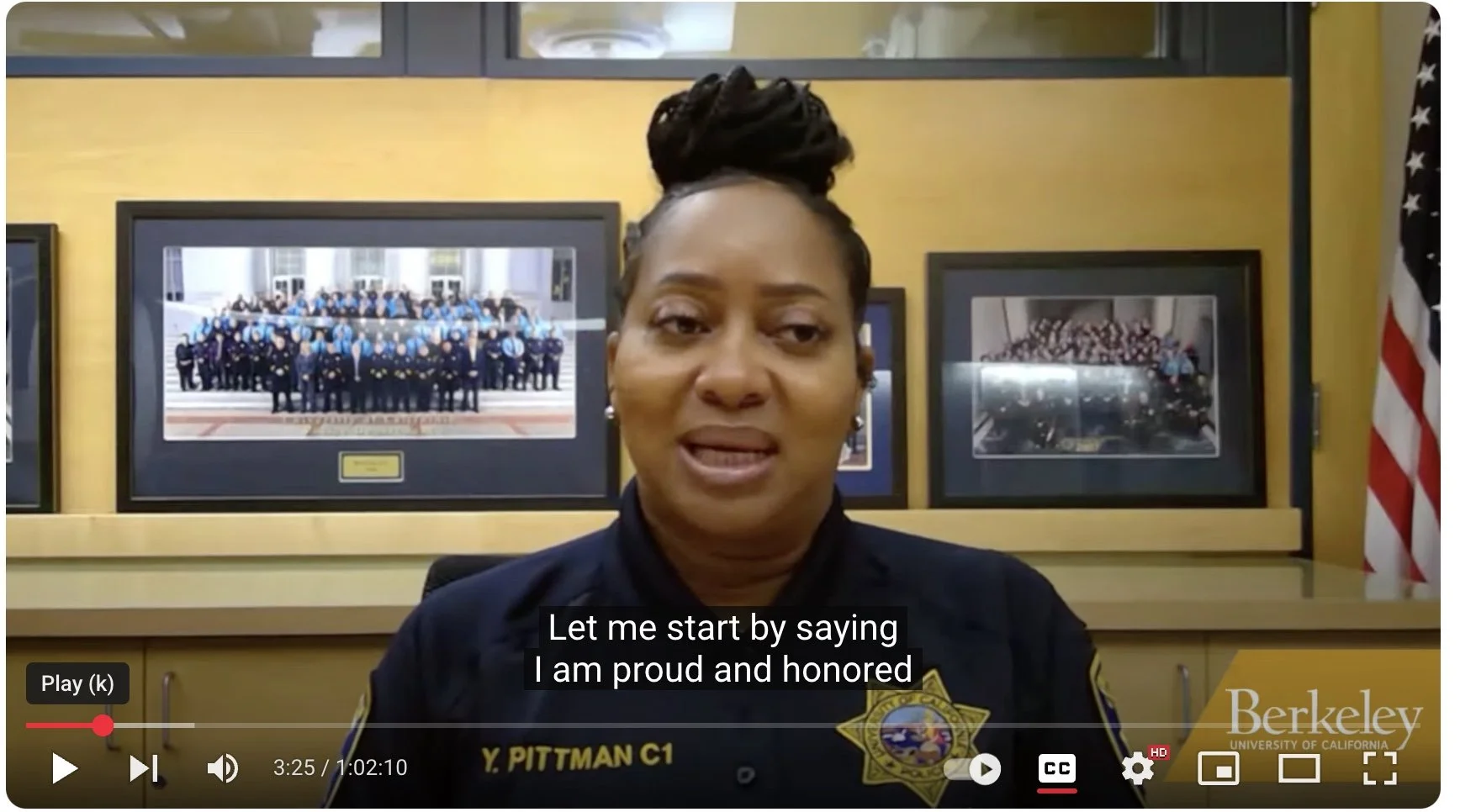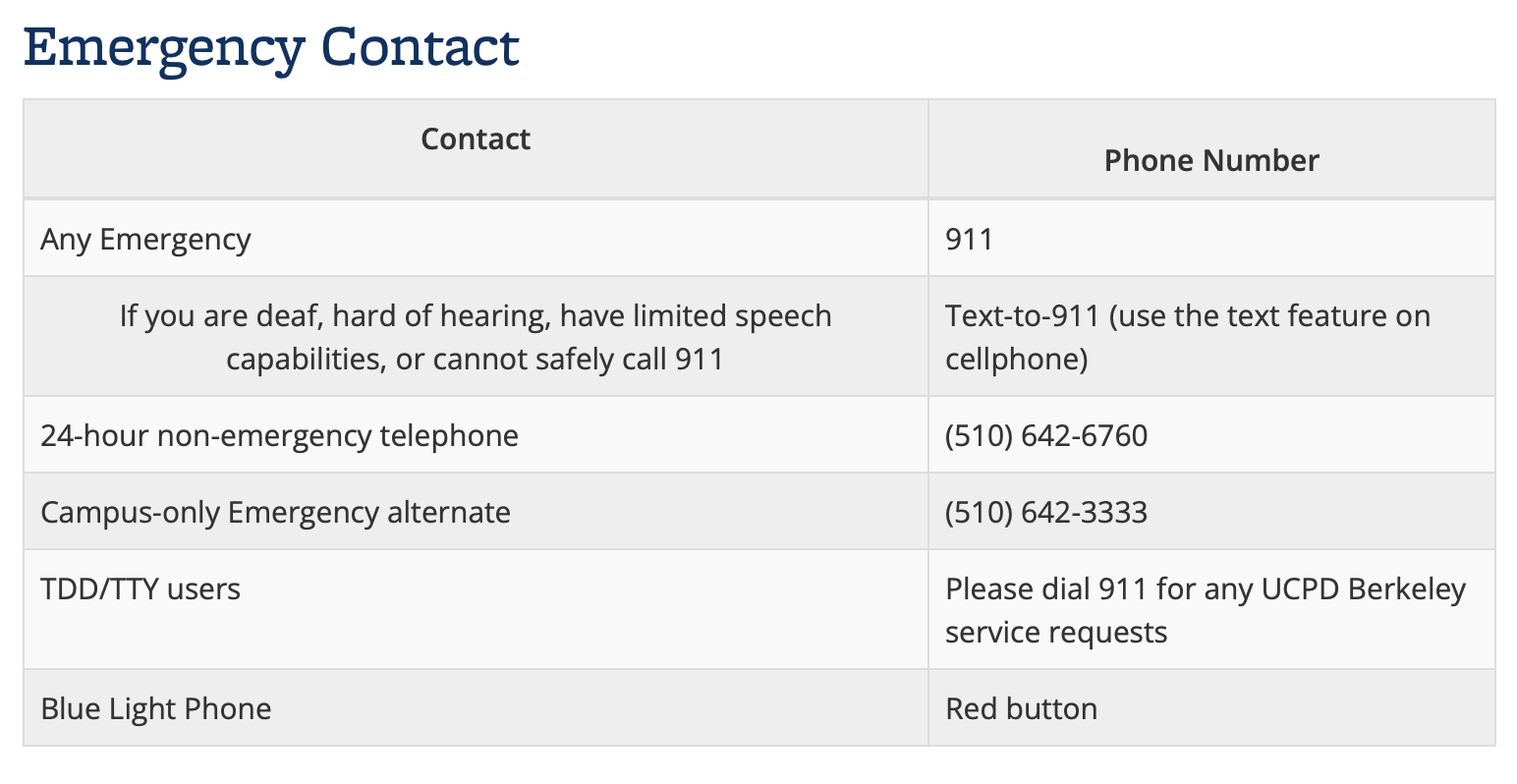Non-affiliates on campus, part 2: residence hall security
Lobby of a Southside residence hall
Safety at UC Berkeley has improved tremendously since the 2021-2022 academic year, when students returned to campus in large numbers after the pandemic to find promised security measures short staffed or missing entirely. Nowhere is that more evident than in the significant improvements to residence hall security.
Here’s a summary of dorm security as it currently stands, as well as the additional measures that SafeBears is advocating for. (Read Part 1, our post on security in non-residential campus buildings, here.)
Security fencing for Southside Units
Construction of security fencing at Unit 2 (photo taken May ‘25)
We’ll start with the newest security measure, one that SafeBears has been calling for since our founding: fencing for Units 1, 2 and 3. These three Units, home to about 70 percent of new students, have seen the bulk of non-affiliate trespassing, particularly before the university took control in early 2024 of its “People’s Park” Southside parcel. Fencing and locked gates will not only make the inner courtyards a safer space for student use and enjoyment, they’ll also provide an additional barrier to entry to the buildings themselves.
Fence construction status:
Unit 2 — under construction and will hopefully be operational when the fall 2025 semester begins. (It was supposed to be finished by the end of the spring ‘25 semester but faced various delays, according to campus administration.)
Unit 3 — has been permitted and was originally slated to be done by the end of calendar year 2025, though whether that goal will be met is unclear given delays at Unit 2. Construction should begin this summer.
Unit 1 — there’s no current plan for a Unit 1 fence. SafeBears will continue to advocate for campus to fund and construct a Unit 1 fence.
The basics: locked doors
Many doors at UC Berkeley are secured electronically, with affiliates using their campus IDs to access
All dorms currently have at least three tiers of secured entry and access, according to the Berkeley Housing website. For example, in Units 1, 2 and 3, students “tap in” with their student ID to access the lobby, and then again to get on the elevator or into the stairwell. Bedroom doors lock with a physical key; suite-style buildings have an additional locking door into the suite.
But locked doors won’t deter trespassing unless students act responsibly:
🔒 Please talk to your students about not propping open secured doors
🔒 Likewise, students should avoid allowing a person they don’t know to “tailgate” behind them through a secured door
Student security personnel
CSOs are part-time student workers who escort students to their desired location late at night and also patrol certain residential areas. (photo: UCPD)
Two main categories of student workers help keep university housing safe: Residential Safety Ambassadors (RSAs) and members of the Community Service Organization (CSOs). (FYI, these jobs are almost always hiring, including over the summer!)
In the Southside dorms (Units 1, 2 and 3; Blackwell; Martinez Commons) RSAs sit in the lobby of each building and check IDs from 9:00pm to 1:00am weekdays and to 1:45am weekends.
The north campus dorms (Foothill and Stern) and the Clark Kerr Campus dorms do not have RSAs due to the architecture of those buildings. Instead, CSOs patrol the grounds at night. CSOs, who are trained and supervised by the UC Berkeley police department (UCPD), also patrol the Southside dorms and Anchor House and visit residence halls when providing the SafeWalk escort service from dusk until 2:30am.
Learn more at the Residential Life Health & Safety webpage.
UC Berkeley Police Department — sworn & unsworn personnel
UC Berkeley Chief of Police Yogananda Pittman discusses campus safety in a Sept 2023 Campus Conversation (available on YouTube). A poll of students, faculty and staff identified non-affiliate behavior on campus as an area of concern.
Residential Life contracts with UCPD for two Security Patrol Officers (unarmed, non-sworn guards) to patrol the Southside residence halls from 6:30pm to 2:30am seven days a week. This security program — for Units 1-3, Blackwell and Martinez Commons - apparently began in the ‘24-’25 academic year and will continue this fall. (By the way, this program sounds a lot like the SafeBears private security pilot, doesn’t it?)
UCPD sworn police officers do check on residence halls, but current staffing levels (about 50 to 55) mean they don’t patrol as much as parents would probably wish. That makes it especially important for students to do their part:
📱 Encourage your students to report suspicious activity on university property directly to UCPD without delay
Call 911 – Yes, 911 works on campus and on all university property!
Students can also program this emergency-alternate number into their cell phones (510-642-3333) – it will connect to UCPD when dialed from university property (like a dorm)
If students feel unsafe making a call, texting 911 is also an option
Message from UPCD: “We understand some students may be hesitant to call police—but a timely call helps us respond more quickly and keep the campus community safe.”
Learn more at UCPD’s Enhancing Safety webpage.
Source: UCPD
SafeBears is advocating for more security measures in the dorms
Here’s what we’re working on and monitoring:
Completion of security fencing at Units 2 and 3, and getting a Unit 1 fencing project funded and scheduled;
Continued funding and recruitment for RSAs and CSOs; full staffing of these positions throughout the ‘24-’25 year was a significant achievement for Residential Life and UCPD, but monitoring is important to prevent backsliding;
Expanded hours for RSAs, because not all trespassing occurs at night;
Expansion of the RSA program to Foothill and Stern, possibly with the construction of a guard booth to serve both complexes (a solution advocated for by student government);
Continued, and ideally expanded, deployment of SPOs, the full-time, unarmed security personnel supervised by UCPD; SPOs have been stationed for years at the UC Berkeley family housing site in west Berkeley, so why not extend this proven program to undergraduate housing, like the Clark Kerr Campus?
If you’d like to help us advocate for better security in campus residence halls and other buildings, please email contact@safebears.org. As an all-volunteer organization, we’re only as effective as the quantity and quality of the people (like you) who step up to help. 💙 💛
Thanks for reading . . . and Go Bears! 🐻
- Victoria

